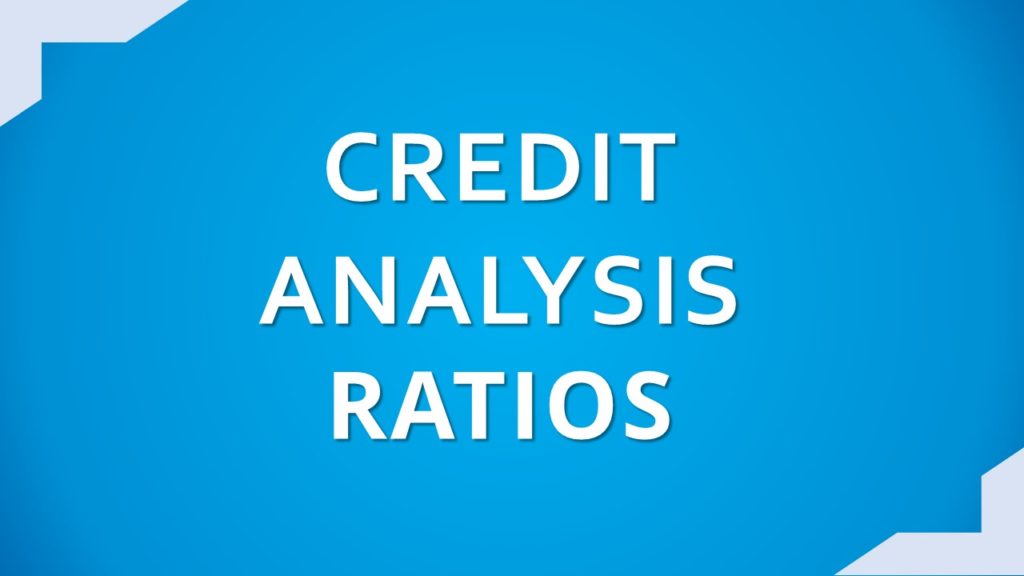Tax Analyst Interview Questions
This article provides essential Tax Analyst interview questions and answers suitable for both freshers and experienced candidates. It covers inquiries related to both Indian and US tax systems, offering valuable insights for those preparing for interviews in the field. Whether you’re new to the industry or have experience, this resource can help you succeed.
A tax analyst is a professional who specializes in analyzing and interpreting tax-related information. They work to ensure compliance with tax laws and regulations, preparing and reviewing financial documents, and providing advice on tax strategies. Tax analysts play a crucial role in helping businesses and individuals navigate the complex landscape of taxation.
Question: What motivated you to pursue a career in tax analysis?
Sample Answer: I am intrigued by the dynamic nature of tax laws and their impact on businesses. Pursuing a career in tax analysis allows me to navigate complex regulations, offering a blend of analytical challenges and the opportunity to contribute to financial strategies.
Question: Have you collaborated with teams in other departments, such as finance or accounting, in your previous roles?
Sample Answer:
Yes, I have extensive experience collaborating with finance and accounting teams, fostering seamless cross-departmental communication and achieving shared organizational goals.
Question: Why are you interested in working as a tax analyst for our company?
Sample Answer:
Here are two answer responses, one for EY and one for KPMG:
EY:
“I’m highly interested in working as a tax analyst for EY because of your firm’s reputation for innovation and global reach. I’m passionate about staying ahead of the curve in tax regulations and believe EY’s commitment to technology and diverse perspectives would provide an ideal environment for me to learn and grow as a tax professional.”
KPMG:
“The opportunity to work with the experienced professionals and collaborative culture at KPMG is very appealing to me. I’m particularly interested in KPMG’s focus on client service and building strong relationships, which aligns perfectly with my desire to use my tax expertise to help businesses thrive.”
Question: Can you explain the basic principles of taxation?
Answer:
Principles of Taxation:
Equity: This principle aims for fairness in the tax system, ensuring everyone contributes proportionally to their ability to pay. It can be achieved through progressive taxation where higher earners pay a higher percentage of their income.
Efficiency: An efficient tax system minimizes the negative impact on economic activity and distortions caused by collecting taxes. This involves minimizing administrative costs and avoiding unnecessary burdens on businesses and individuals.
Certainty: Tax laws should be clear and unambiguous to ensure everyone understands their obligations and promotes compliance.
Convenience: The tax system should be convenient for taxpayers to comply with, minimizing administrative burdens and facilitating timely and accurate payments.
Question: What is the difference between Income tax and sales tax?
Answer:
Income Tax:
Income tax is a direct levy imposed by the government on the earnings of individuals or entities. It encompasses a diverse array of income sources such as salaries, business profits, and capital gains. Notably, income tax operates on a progressive scale, wherein higher incomes incur higher tax rates. This system aims to ensure a fair distribution of the tax burden based on one’s ability to pay, reflecting the principle of fiscal equity in taxation. The collected revenue contributes to funding public services, infrastructure, and government initiatives.
In India, the Income Tax Act governs the assessment and collection of income tax, with individuals and businesses required to file annual returns to determine their taxable income.
Sales Tax:
Sales tax, on the other hand, is an indirect tax levied on the sale of goods and services at the point of purchase. It is a percentage of the transaction value and is typically borne by the end consumer. Unlike income tax, sales tax is not based on income but on the value of the goods or services exchanged. In India, the Goods and Services Tax (GST) has replaced various state-level taxes, unified the taxation structure and simplified the process of collecting sales tax on goods and services.
Question: What methods do you employ to verify balance sheets?
Answer: “To verify balance sheets, I utilize a combination of analytical review, reconciliation, and scrutiny of supporting documentation. This involves comparing current balances with historical data, ensuring consistency and accuracy. Additionally, I perform detailed reconciliations of accounts, such as bank statements, receivables, and payables, to identify discrepancies or irregularities.
Examination of supporting documents, including invoices, contracts, and financial statements, helps validate the integrity of reported balances. Regular audits, both internal and external, further reinforce the accuracy and reliability of balance sheet figures.”
Question: Can you explain the basics of the Indian tax system, including direct and indirect taxes?
Answer:
The Indian tax system is a two-tier structure, divided into direct taxes and indirect taxes:
Direct Taxes:
- Levied directly on the income or wealth of individuals and entities.
- Paid by the taxpayer directly to the government.
Examples:
-
- Income Tax: Paid on income earned through various sources like salaries, businesses, investments, etc.
- Corporation Tax: Levied on the profits of domestic and foreign companies operating in India.
- Capital Gains Tax: Paid on profits earned from the sale of assets like capital, property, etc.
- Wealth Tax: (Abolished in 2015)
Indirect Taxes:
- Imposed on the consumption or sale of goods and services.
- Collected from businesses who then pass the tax burden to consumers by including it in the final price.
Examples:
-
- Goods and Services Tax (GST): A single, unified tax levied on the supply of goods and services across the country.
- Customs Duty: Charged on imported goods entering the country.
- Excise Duty: Now subsumed under GST, it was charged on domestically produced goods.
Question: What are the different types of taxes individuals and businesses pay?
Answer:
Individuals and businesses encounter various tax categories, which can be broadly classified into three main types:
- Income Taxes:
- Individual Income Tax: A tax levied on an individual’s wages, salaries, investments, and other forms of income. The tax rate typically increases progressively with higher income levels.
- Corporate Income Tax: A tax imposed on the profits earned by a corporation.
- Taxes on Goods and Services:
- Sales Tax: A tax levied on the sale of certain goods and services, usually collected at the point of purchase. Rates can vary by state or locality.
- Excise Tax: A tax levied on specific goods like gasoline, cigarettes, and alcohol. The
- tax is usually included in the price of the good.
- Value-Added Tax (VAT): A tax applied at each stage of the production and distribution chain of a good or service, ultimately borne by the final consumer. Not common in the US but used in many other countries.
- Property Taxes:
- Real Estate Tax: A tax levied on the assessed value of real property, such as land and buildings.
- Personal Property Tax: A tax levied on the assessed value of personal belongings, such as vehicles and boats (may not apply in all jurisdictions).
Additionally:
- Payroll Taxes: These are a combination of taxes withheld from an employee’s pay check, typically including Social Security and Medicare, and paid by both the employee and employer.
- Estate and Gift Taxes: These are taxes imposed on the transfer of wealth during life or upon death.
Remember that specific tax types, rates, and regulations can vary depending on your location and specific circumstances.
Question: What is the purpose of tax research?
Answer:
The purpose of tax research is to analyse and interpret complex tax laws and regulations, seeking solutions to specific tax-related issues. Through tax research, professionals aim to understand the implications of tax laws on financial transactions, identify legal ways to minimize tax liabilities, and ensure compliance with changing regulations.
It involves staying updated on tax codes, judicial decisions, and administrative rulings to provide accurate and timely advice, aiding individuals and businesses in making informed financial decisions and optimizing their tax positions.
Question: Could you elaborate on the concept of depreciation and outline the various depreciation methods specified under the Indian Income Tax Act?
Answer:
Depreciation is the systematic allocation of the cost of an asset over its useful life. Under the Indian Income Tax Act, different methods for calculating depreciation include the Straight-Line Method, Written Down Value Method, and the Annuity Method.
Here’s a breakdown of the two most common methods:
- Straight Line Method (SLM):
This method is a straightforward approach where the cost of the asset, minus its residual value (salvage value) at the end of its useful life, is deducted equally over its useful life span. For instance, if a computer with a cost of ₹1,00,000 and a residual value of ₹10,000 has a useful life of 5 years, the annual depreciation deduction would be:
(₹1,00,000 – ₹10,000) / 5 years = ₹18,000 per year
- Written Down Value Method (WDV):
This method calculates depreciation based on a fixed percentage of the written down value of the asset at the beginning of each year. The written down value is the original cost of the asset minus the accumulated depreciation claimed in previous years. This approach results in a higher depreciation deduction in the initial years and gradually reduces the deduction over time.
3.Annuity method: The annuity method is a less common method for calculating depreciation on fixed assets. It’s also referred to as the compound interest method of depreciation.
Question: What are some common tax deductions and credits?
Answer:
In India, several tax deductions and credits can help reduce your taxable income, lowering your overall tax liability. Here are some of the most common ones:
Deductions under Section 80:
- Section 80C, 80CCC & 80CCD(1): This combined section covers various investments and expenses that qualify for deductions, with a total limit on the amount deductible. Examples include:
- Contributions to Employee Provident Fund (EPF) and Public Provident Fund (PPF)
- Life insurance premiums
- Equity Linked Saving Schemes (ELSS) investments
- Tuition fees for children’s education
- Principal repayment of a home loan
- Section 80D: This section allows deductions for medical insurance premiums paid for yourself, spouse, dependent children, and parents. The deduction limit varies depending on the age of the insured individuals.
- 80G: Donations made to certain charitable organizations and approved institutions qualify for deductions under this section.
- 80TTA: Interest income earned up to a certain limit on savings accounts with banks is exempt from tax.
- Section 80EE: First-time homebuyers can claim an additional deduction on the interest paid on their home loan.
- 80GG: If you don’t own a house and pay rent, you can claim a deduction for a portion of the rent paid under this section.
Other Deductions:
- Interest on education loan (Section 80E)
It’s important to note that these are just some of the common deductions and credits available. The specific deductions and credits you qualify for will depend on your individual circumstances.
In USA:
Tax deductions and credits are two ways to reduce your tax burden, but they work differently in US:
Tax Deductions:
Reduce your taxable income, which means you pay taxes on a smaller amount of money.
Some common deductions include:
- Mortgage interest: Interest paid on a qualified home mortgage.
- Charitable contributions: Donations to qualified charities.
- State and local income taxes or sales taxes (up to a limit).
- Medical and dental expenses exceeding 7.5% of your Adjusted Gross Income (AGI).
- Student loan interest (up to a limit).
- Retirement plan contributions (IRA, 401(k), etc.).
Tax Credits:
Directly reduce the amount of tax you owe, dollar for dollar.
Some common tax credits include:
- Child Tax Credit: A credit for qualifying children under a certain age.
- Earned Income Tax Credit (EITC): A credit for low- and moderate-income workers.
- Lifetime Learning Credit: A credit for educational expenses.
- Retirement Savings Contributions Credit: A credit for contributions to certain retirement accounts.
Question: Calculate the taxable income for a corporation based on a provided income statement and balance sheet.
Answer:
Calculate the taxable income for a corporation:
To calculate the taxable income for a corporation in India, start with the net profit as per the income statement. Adjustments are made based on allowable expenses, depreciation, and deductions under the Income Tax Act. The final taxable income is then determined after applying the corporate tax rate applicable for the assessment year.
Question: Can you explain Deferred Tax Liability?
Answer:
Deferred tax liability arises from temporary differences between the book value and tax value of certain assets and liabilities. It represents the future tax consequences of events that have already been recognized in financial statements but have not yet been reflected in tax returns. These differences may result from varying depreciation methods, recognition of revenue or expenses, and other timing disparities. Deferred tax liabilities indicate future tax payments when the temporary differences reverse.
Question: How do you ensure accuracy in tax calculations and analysis?
Answer:
Accuracy in tax calculations and analysis is ensured through meticulous attention to detail and adherence to tax regulations. Regular training and staying abreast of updates in tax laws are essential. Leveraging specialized tax software also aids in precise calculations. Moreover, cross-verification of data, periodic reviews, and collaboration with internal and external stakeholders contribute to accuracy. Thorough documentation of assumptions and methodologies further supports the integrity of tax calculations.
Question: What is the difference between filing status options for individual tax returns (e.g., single, married filing jointly).
Answer:
In India, the filing status options include individual, Hindu Undivided Family (HUF), and senior citizen. The applicable status depends on factors like age, income sources, and family structure. Each status has different tax slabs and exemptions. For instance, senior citizens enjoy additional tax benefits. Unlike the U.S. system, India does not have a “married filing jointly” concept for individual taxpayers.
Question: What are the tax implications of different business structures (e.g., sole proprietorship, LLC, C corporation).
Answer:
The tax implications in India vary among business structures. Sole proprietorships and partnerships are taxed based on the individual tax rates of the owners. Limited Liability Companies (LLCs) are treated as separate entities, subject to corporate tax rates. C Corporations are also taxed separately, and dividends distributed to shareholders are subject to Dividend Distribution Tax (DDT). Choosing the right structure involves considering tax implications, liability, and regulatory requirements.
Question: Discuss your experience with international taxation and any challenges you’ve encountered in dealing with cross-border transactions?
Sample Answer:
In my previous role, I handled international taxation, ensuring compliance with tax laws across multiple jurisdictions. Managing cross-border transactions involved navigating complexities arising from varying tax codes, transfer pricing regulations, and treaties. Challenges included mitigating double taxation, interpreting and applying international tax laws, and coordinating with tax authorities in different countries.
Implementing effective strategies to optimize tax outcomes while adhering to global regulations was a key focus, balancing the need for operational flexibility with the imperative of legal compliance.
Question: What is your experience with tax planning and how you have contributed to minimizing tax liabilities for a company?
Sample Answer:
I have actively contributed to tax planning initiatives aimed at minimizing tax liabilities for the company. This involved thorough analysis of the tax code, identifying eligible deductions, credits, and incentives. By strategically structuring transactions, maximizing available tax breaks, and ensuring compliance with regulations, I helped the company achieve a more tax-efficient position.
Additionally, I played a pivotal role in advising on the selection of tax-effective business structures and implementing measures to enhance overall tax efficiency. This approach not only optimized the company’s financial performance but also ensured alignment with ethical and legal standards in tax practices.
Question: What are your decision-making processes for tax-related issues?
Answer:
The decision-making process for tax-related issues involves a comprehensive approach. It begins with a thorough analysis of the specific tax problem, considering applicable laws and regulations. Collaboration with internal teams, legal experts, and tax consultants is crucial. Evaluating potential risks and benefits, along with considering long-term strategic goals, guides decision-making.
Regular monitoring of changes in tax codes and staying informed about industry best practices contribute to informed decisions. Additionally, adherence to ethical standards and transparent communication with relevant stakeholders ensures decisions align with organizational values and objectives.
Question: Walk through the process of preparing a specific tax form (e.g., Form 1040, Form 1120)
Answer:
In India, a common form for individuals is ITR-1 (Sahaj), while companies use ITR-6. To prepare ITR-1, gather details of income, deductions, and investments. For ITR-6, compile financial statements, audit reports, and other required documents. Complete the relevant form with accurate information, ensuring compliance with Indian tax laws. Submit the form electronically and verify the acknowledgment to complete the filing process.
Question: What are the most recent updates or modifications in the Indian tax policies?
Answer:
Some key changes were introduced in the previous budget (2023-2024) that are still relevant:
- Reduced Highest Tax Surcharge: The highest surcharge rate under the new tax regime for income exceeding Rs. 5 crore was reduced from 37% to 25%. This brings the effective tax rate down from 42.74% to 39%.
- Increased Tax Rebate: The tax rebate under the new tax regime has been increased. Individuals with a net taxable income of up to Rs. 7 lakhs are now exempt from paying income tax.
- Increased Leave Encashment Limit: The tax-exempt limit for leave encashment upon retirement for non-government employees has been increased from Rs. 3 lakhs to Rs. 25 lakhs.
- Increased Threshold for Tax Audit: The threshold limit for mandatory tax audits under Section 44AB has been increased from Rs. 1 crore to Rs. 5 crores, provided cash transactions stay below a certain limit.
- Tax Benefits for New Manufacturing Companies: Concessional corporate tax rates of 15% have been introduced for new manufacturing and power sector companies.
Note: It’s always advisable to consult a tax professional for the most up-to-date and accurate information specific to your situation.
Question: Walk me through the process of preparing an Income Tax Return (ITR) for an individual?
Answer:
Preparing an ITR for an individual in India involves:
- Gathering information: PAN, Aadhaar, income proofs, deductions & exemptions proofs.
- Selecting the appropriate ITR form based on income sources and amount.
- Filling the form: Accurately entering income, deductions, and tax calculations.
- Calculating taxes: Subtracting deductions from income, applying tax rates, and adjusting for TDS.
- E-verification: Using Aadhaar or EVC to verify the return electronically.
- Submission: Electronically submitting the ITR through the official portal.
Remember, consulting a tax professional is recommended for complex situations and accurate guidance.
Question: What strategies do you employ to stay current with updates and changes in the Indian tax code?
Answer:
I prioritize continuous learning by regularly monitoring official publications from the Income Tax Department, attending relevant seminars, and subscribing to reputable tax news sources.
Government Resources:
- CBDT Website: Updates on direct tax law changes (https://incometaxindia.gov.in/Pages/default.aspx)
- Ministry of Finance: Budget announcements and notifications (https://finmin.nic.in/)
Stay Informed:
- Professional Associations: ICAI journals/workshops (https://www.icai.org/)
- News & Media: Financial news & tax-focused websites
US Tax Analyst
Question: What is the difference between a deduction and a credit?
Answer:
A deduction reduces the taxable income, while a credit directly reduces the amount of tax owed.
Deductions are subtracted from the total income before calculating the tax, lowering the taxable income. Credits are applied after tax calculation, reducing the actual tax liability.
Deductions are based on eligible expenses or contributions, while credits are often tied to specific criteria like education expenses or child care costs.
Question: What are the different types of income taxes in the US?
Answer:
The US tax system levies income taxes at three levels:
- Federal Income Tax: This is the tax imposed by the federal government on the taxable income of individuals, corporations, trusts, and estates. The IRS (Internal Revenue Service) collects and administers the federal income tax.
State Income Tax: Not all states impose an income tax, but many do. These state income taxes are levied on the taxable income of residents and, in some cases, non-residents who do business within the state.
Local Income Tax: In addition to state income taxes, some localities, such as cities or counties, may also levy their own income taxes.
Social Security and Medicare Taxes (FICA): Collected to fund social security and healthcare programs.
Here’s a table summarizing the key points:
| Type of Income Tax | Imposed by | Applies to | Rate Structure |
| Federal Income Tax | Federal Government | Individuals, Corporations, Trusts, Estates | Progressive |
| State Income Tax | Individual States | Residents (and sometimes non-residents) | Varies by state (progressive, flat, or none) |
| Local Income Tax | Cities or Localities | Residents | Usually flat rate, lower than federal or state taxes |
Question: Walk me through the process of preparing a corporate tax return?
Answer:
- Gather financial statements, income statements, and other relevant documents.
- Identify eligible deductions, credits, and exemptions.
- Calculate taxable income after deductions.
- Determine the applicable corporate tax rate and calculate the tax liability.
- Complete necessary tax forms, including Form 1120 for federal taxes.
- Submit the tax return to the IRS along with any required documentation.
Question: What are some common tax planning strategies for businesses?
Answer:
- Maximizing deductions: Identifying and utilizing all allowable business expenses to lower taxable income.
- Depreciation strategies: Selecting the appropriate depreciation method to optimize the deduction for depreciable assets.
- Employee benefit planning: Offering tax-advantaged benefits like health insurance or retirement plans to reduce taxable income for both the employer and employees.
- Choosing the right business structure: Selecting a legal business structure (e.g., LLC, S-corporation) with favourable tax implications.
Question: What is a depreciation and different types of depreciation methods?
Answer:
Depreciation: Spreading the cost of a tangible asset over its useful life for tax purposes, allowing businesses to deduct a portion of the cost each year.
Different depreciation methods:
- Straight-line method: Deducts an equal amount of the asset’s cost each year over its useful life.
- Modified Accelerated Cost Recovery System (MACRS): Allows for a higher deduction in the early years of the asset’s life and gradually reduces the deduction in later years.
- Double declining balance (DDB): Accelerates depreciation deductions in the early years, but not as aggressive as some other methods like sum-of-the-years’-digits (SYD).
Question: How do you stay up-to-date on changes in the US tax code?
Answer:
Professional organizations: Joining professional organizations like the American Institute of Certified Public Accountants (AICPA) or the National Association of Tax Professionals (NATP) provides access to newsletters, seminars, and online resources with updates.
Tax publications: Subscribing to tax publications or online services like CCH Tax Research Net or BNA Tax & Accounting provides updates on relevant tax law changes.
Government websites: The IRS website (https://www.irs.gov/) frequently publishes updates and guidance on tax code changes.
In conclusion, whether you’re a fresher or an experienced candidate, preparing for a taxa analyst interview in both US and Indian tax domains requires a solid understanding of tax principles, regulations, and analytical skills. By reviewing and understanding these interview questions and answers, you can better position yourself to confidently tackle the challenges of the interview process.
Remember to showcase your knowledge, experience, and enthusiasm for tax analysis, and don’t forget to tailor your responses to demonstrate your understanding of both US and Indian tax systems. Good luck with your interview preparations and future endeavors in the field of taxa analysis!





